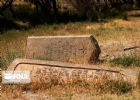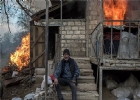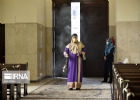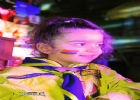
-
2026 yılı size ve tüm sevdiklerinize önce sağlık, sonra huzur ve tükenmeyen mutluluklar getirsin. He
-
Türkiye ile Ermenistan Arasında İki Ülkenin Resmi Pasaport Hamilleri için Vize Kolaylaştırma Kararı
-
Ermenistan-Türkiye arasında ücretsiz e-vize dönem
-
Türkiye ile Ermenistan’dan Vize Kolaylaştırma Kararı
-
Türkiye – Ermenistan Sınırı 1 Ocak’a Kısmen Açılıyor
English :
16 Aralık 2020
![]()
![]()
![]()
Two men beheaded in videos from Nagorno-Karabakh war identified - 
Exclusive: Ethnic Armenian men refused to leave their villages before Azerbaijani forces arrived, locals say
Two elderly men who were beheaded by Azerbaijani forces in videos widely shared on messaging apps have been identified, confirming two of the bloodiest atrocities of the recent war in Nagorno-Karabakh.
The ethnic Armenian men were non-combatants, people in their respective villages said. Both were beheaded by men in the uniforms of the Azerbaijani armed forces. The short, gruesome videos of the killings are among the worst of a torrent of footage portraying abuse, torture and murder that has continued to emerge more than a month after a Russian-brokered ceasefire came into force.
The villagers’ testimony in interviews with the Guardian corroborates identifications by a human rights ombudsman for the Armenian-backed local government and two prominent Armenian human rights lawyers preparing a criminal case relating to the murders.
The Guardian also confirmed one of the victim’s identities with a relative, and reviewed a passport application photograph that strongly resembles the other victim.Human rights groups detail 'war crimes' in Nagorno-Karabakh
Read moreIn videos posted online on 22 November and 3 December, men in uniforms consistent with those of the Azerbaijani military hold down and decapitate a man using a knife. One then places the severed head on a dead animal. “This is how we get revenge – by cutting off heads,” a voice says off camera.
Two residents of the village of Madatashen, in Nagorno-Karabakh, identified the victim as Genadi Petrosyan, 69, who had moved to the village in the late 1980s from the city of Sumgait, in Azerbaijan.
Gayane Petrosyan (no relation), the head of the local school, lived directly across from Petrosyan’s modest, two-room house. She said his father had helped install the village’s electrical system, and he had shown her pictures of a son who had moved to Russia with his ex-wife.
She said of one of the videos: “I could clearly see his face and I could recognise that it was him.” The Guardian has also seen a photograph of Petrosyan that closely resembles the victim in the video.
Genadi Petrosyan, who lived alone, resisted leaving the village as Azerbaijani forces closed in. When a neighbour tried to drive him away, he got out of the car and walked home.
Eduard Hayrapetyan, the village head, said he had known Petrosyan for more than three decades and considered him a close friend of his family’s. He received his last call from Petrosyan on the morning of 28 October, to say he had seen enemy forces in the village. Then, after weeks of silence, the video emerged.
“I feel great sorrow that I took him away from the village and then he came back and this happened,” Hayrapetyan said. “I just can’t find my place.”
Artak Beglaryan, a human rights ombudsman for the local Armenian-backed government, said Petrosyan had been identified by combing 35 missing persons reports for the region and then contacting acquaintances, who confirmed his identity.
He called for greater efforts by the international community to investigate war crimes from the conflict. “Western countries have kept silent and they haven’t taken practical steps,” he said. “They have the duties and levers to speak about this … we don’t see any results, we don’t see any process from them.”
Siranush Sahakyan, a human rights lawyer, also confirmed Petrosyan’s identity and said she and a colleague, Artak Zeynalyan, had prepared a criminal investigation into the murder.
“Emotionally, it is hard to watch the videos. From a professional perspective, it can be very useful evidence,” Sahakyan said, cautioning that they had to carefully vet videos to make sure they were not faked.
Amnesty International has called on Armenia and Azerbaijan to investigate videos of the decapitations and desecrations of corpses. The organisation has used digital verification techniques to authenticate the footage reviewed in this article, as well as footage of the murder of an Azerbaijani border guard who had his throat cut. Other videos show soldiers desecrating the bodies of enemy fighters.
While both sides have been implicated, online channels are increasingly dominated by videos of Armenian soldiers and civilians being abused by advancing Azerbaijani troops.
New revelations of torture and abuse mean that for many the violence continues even long after the war was halted. “Armenians and Azerbaijanis are watching those videos day in and day out, and every day there is a new video which is sending a new wave of assault on the public and public sensibilities,” said Tanya Lokshina, a researcher for Human Rights Watch, which prepared a painstaking report on abuses against Armenian prisoners of war, released early this month. “That trauma also results in increased levels of hatred. Even now when the active stage of the fighting is over.”
Some of the most gruesome and widely watched videos have also been some of the most difficult to confirm. A video posted on a Telegram channel on 7 December showed two soldiers in uniforms consistent with the Azerbaijani military pinning down an elderly man near a tree. Another soldier passes a knife to one of the attackers, who begins slicing at the victim’s neck. The victim’s head begins to separate from the neck before the video ends.
Three residents of the village of Azokh identified the victim in this video as Yuri Asryan, a reclusive 82-year-old who had refused to leave the village on 20 October as Azerbaijani forces approached.
“He didn’t communicate with others very much. He just refused to leave,” said Georgi Avesyan, the longtime head of the village until 2019 and one of the people who identified Asryan. He said it was possible Asryan did not fully understand what was happening.
Azerbaijani forces entered the village days later and it has remained under Baku’s control under the ceasefire agreement signed on 9 November.
There was no news of Asryan’s fate until a 29-second video appeared last week on social networks, including Telegram channels that traffic in gory footage from the conflict.
Araik Azumanyan, the current head of the village, said: “I received calls from many people from the village, and even people who had moved from the village to Armenia many years ago saying it looked like [Asryan] in the video.”
A third villager who recognised Asryan said: “I felt terrible after watching it, my blood pressure was high, I couldn’t compose myself for a week after seeing that.”
Beglaryan, the human rights ombudsman, and Sahakyan, the human rights lawyer, also confirmed Asryan’s identity. His closest relative, an elderly sister who occasionally visited him, knows that Asryan has died but has not seen the video. Asryan’s niece also confirmed to the Guardian that it was him in the video.
Azerbaijan’s general prosecutor last month publicly launched an investigation into war crimes by both Baku and Yerevan. On Monday it made its first arrests, detaining two Azerbaijani soldiers for defiling the bodies of dead Armenian troops and two for destroying graves. It has not publicly opened any criminal cases into beheadings.
There are hundreds more videos of abuses online. Sahakyan said she and a colleague were pursuing 75 cases of captive Armenian soldiers and civilians in the European court of human rights, including 35 that included video evidence. On Monday evening, the two government conducted a mass prisoner exchange, media in both countries reported.
In one video, a villager named Kamo Manasyan is kicked and beaten as blood streams from his right eye. “How many more of you are here,” his interrogator yells in heavily accented Russian, aiming a rifle at Manasyan’s head. “Shoot me if you want,” Manasyan replies. The man hits him with the rifle instead.
“It was hard to watch this video with this cruelty,” said Gagik, his nephew, in a video call. “I think they just want to show their success in this war and to humiliate Armenians, to show that they won.”
Manasyan’s sister, Nora, cannot bear to watch the video. “I want the prisoners of war to come back as soon as possible,” she said, crying. “I want peace.”
Asked for comment on allegations of human rights abuses during the war, a spokesman for the Council of Europe’s Commissioner on Human Rights said: “At this stage we can only say that the Commissioner has received videos and other material alleging human rights violations. Before expressing herself publicly, she wants to carry out a mission in order to assess the situation in first person. She is planning a mission to the region soon.”
* Gohar Martirosyan contributed reporting and translating from Yerevan, Armenia
Two elderly men who were beheaded by Azerbaijani forces in videos widely shared on messaging apps have been identified, confirming two of the bloodiest atrocities of the recent war in Nagorno-Karabakh.
The ethnic Armenian men were non-combatants, people in their respective villages said. Both were beheaded by men in the uniforms of the Azerbaijani armed forces. The short, gruesome videos of the killings are among the worst of a torrent of footage portraying abuse, torture and murder that has continued to emerge more than a month after a Russian-brokered ceasefire came into force.
The villagers’ testimony in interviews with the Guardian corroborates identifications by a human rights ombudsman for the Armenian-backed local government and two prominent Armenian human rights lawyers preparing a criminal case relating to the murders.
The Guardian also confirmed one of the victim’s identities with a relative, and reviewed a passport application photograph that strongly resembles the other victim.Human rights groups detail 'war crimes' in Nagorno-Karabakh
Read moreIn videos posted online on 22 November and 3 December, men in uniforms consistent with those of the Azerbaijani military hold down and decapitate a man using a knife. One then places the severed head on a dead animal. “This is how we get revenge – by cutting off heads,” a voice says off camera.
Two residents of the village of Madatashen, in Nagorno-Karabakh, identified the victim as Genadi Petrosyan, 69, who had moved to the village in the late 1980s from the city of Sumgait, in Azerbaijan.
Gayane Petrosyan (no relation), the head of the local school, lived directly across from Petrosyan’s modest, two-room house. She said his father had helped install the village’s electrical system, and he had shown her pictures of a son who had moved to Russia with his ex-wife.
She said of one of the videos: “I could clearly see his face and I could recognise that it was him.” The Guardian has also seen a photograph of Petrosyan that closely resembles the victim in the video.
Genadi Petrosyan, who lived alone, resisted leaving the village as Azerbaijani forces closed in. When a neighbour tried to drive him away, he got out of the car and walked home.
Eduard Hayrapetyan, the village head, said he had known Petrosyan for more than three decades and considered him a close friend of his family’s. He received his last call from Petrosyan on the morning of 28 October, to say he had seen enemy forces in the village. Then, after weeks of silence, the video emerged.
“I feel great sorrow that I took him away from the village and then he came back and this happened,” Hayrapetyan said. “I just can’t find my place.”
Artak Beglaryan, a human rights ombudsman for the local Armenian-backed government, said Petrosyan had been identified by combing 35 missing persons reports for the region and then contacting acquaintances, who confirmed his identity.
He called for greater efforts by the international community to investigate war crimes from the conflict. “Western countries have kept silent and they haven’t taken practical steps,” he said. “They have the duties and levers to speak about this … we don’t see any results, we don’t see any process from them.”
Siranush Sahakyan, a human rights lawyer, also confirmed Petrosyan’s identity and said she and a colleague, Artak Zeynalyan, had prepared a criminal investigation into the murder.
“Emotionally, it is hard to watch the videos. From a professional perspective, it can be very useful evidence,” Sahakyan said, cautioning that they had to carefully vet videos to make sure they were not faked.
Amnesty International has called on Armenia and Azerbaijan to investigate videos of the decapitations and desecrations of corpses. The organisation has used digital verification techniques to authenticate the footage reviewed in this article, as well as footage of the murder of an Azerbaijani border guard who had his throat cut. Other videos show soldiers desecrating the bodies of enemy fighters.
While both sides have been implicated, online channels are increasingly dominated by videos of Armenian soldiers and civilians being abused by advancing Azerbaijani troops.
New revelations of torture and abuse mean that for many the violence continues even long after the war was halted. “Armenians and Azerbaijanis are watching those videos day in and day out, and every day there is a new video which is sending a new wave of assault on the public and public sensibilities,” said Tanya Lokshina, a researcher for Human Rights Watch, which prepared a painstaking report on abuses against Armenian prisoners of war, released early this month. “That trauma also results in increased levels of hatred. Even now when the active stage of the fighting is over.”
Some of the most gruesome and widely watched videos have also been some of the most difficult to confirm. A video posted on a Telegram channel on 7 December showed two soldiers in uniforms consistent with the Azerbaijani military pinning down an elderly man near a tree. Another soldier passes a knife to one of the attackers, who begins slicing at the victim’s neck. The victim’s head begins to separate from the neck before the video ends.
Three residents of the village of Azokh identified the victim in this video as Yuri Asryan, a reclusive 82-year-old who had refused to leave the village on 20 October as Azerbaijani forces approached.
“He didn’t communicate with others very much. He just refused to leave,” said Georgi Avesyan, the longtime head of the village until 2019 and one of the people who identified Asryan. He said it was possible Asryan did not fully understand what was happening.
Azerbaijani forces entered the village days later and it has remained under Baku’s control under the ceasefire agreement signed on 9 November.
There was no news of Asryan’s fate until a 29-second video appeared last week on social networks, including Telegram channels that traffic in gory footage from the conflict.
Araik Azumanyan, the current head of the village, said: “I received calls from many people from the village, and even people who had moved from the village to Armenia many years ago saying it looked like [Asryan] in the video.”
A third villager who recognised Asryan said: “I felt terrible after watching it, my blood pressure was high, I couldn’t compose myself for a week after seeing that.”
Beglaryan, the human rights ombudsman, and Sahakyan, the human rights lawyer, also confirmed Asryan’s identity. His closest relative, an elderly sister who occasionally visited him, knows that Asryan has died but has not seen the video. Asryan’s niece also confirmed to the Guardian that it was him in the video.
Azerbaijan’s general prosecutor last month publicly launched an investigation into war crimes by both Baku and Yerevan. On Monday it made its first arrests, detaining two Azerbaijani soldiers for defiling the bodies of dead Armenian troops and two for destroying graves. It has not publicly opened any criminal cases into beheadings.
There are hundreds more videos of abuses online. Sahakyan said she and a colleague were pursuing 75 cases of captive Armenian soldiers and civilians in the European court of human rights, including 35 that included video evidence. On Monday evening, the two government conducted a mass prisoner exchange, media in both countries reported.
In one video, a villager named Kamo Manasyan is kicked and beaten as blood streams from his right eye. “How many more of you are here,” his interrogator yells in heavily accented Russian, aiming a rifle at Manasyan’s head. “Shoot me if you want,” Manasyan replies. The man hits him with the rifle instead.
“It was hard to watch this video with this cruelty,” said Gagik, his nephew, in a video call. “I think they just want to show their success in this war and to humiliate Armenians, to show that they won.”
Manasyan’s sister, Nora, cannot bear to watch the video. “I want the prisoners of war to come back as soon as possible,” she said, crying. “I want peace.”
Asked for comment on allegations of human rights abuses during the war, a spokesman for the Council of Europe’s Commissioner on Human Rights said: “At this stage we can only say that the Commissioner has received videos and other material alleging human rights violations. Before expressing herself publicly, she wants to carry out a mission in order to assess the situation in first person. She is planning a mission to the region soon.”
* Gohar Martirosyan contributed reporting and translating from Yerevan, Armenia
Bu haber theguardian kaynağından gelmektedir.
Haber metninde yer alan görüşler haber kaynağı (theguardian) ve yazarına ait olup,
bolsohays.com sitesi haber hakkında herhangi bir görüş üstlenmemektedir.
Opinions expressed are those of the author(s)-(theguardian). They do not purport to reflect the opinions or views of bolsohays.com
Diğer Haberler
-
Azerbaijan-Armenia normalization push set to carry into 2026
-
Pashinyan Urges Karabakh Armenians to Embrace Armenian Citizenship for Security
-
Armenia adopts universal healthcare insurance
-
Armenia pays mothers $1,300 for each child born
-
Photography of Ancient Armenia Featured in New 2026 Wall Calendar
-
Pope asks for prayers ahead of visit to Türkiye and Lebanon
-
Armenia will step up its efforts toward membership in the European Union in 2026
-
Economy Minister discussed rebranding of Armenian brandy with producers
-
Aleppo - Yerevan - Aleppo
-
Mirzoyan: Armenia citizens should live in Armenia, Azerbaijan citizens should live in Azerbaijan
-
Armenia will officially receive the European Union`s visa liberalization action plan in the coming
-
Armenia might achieve visa-free travel to the European Union within two years
Foto Galeri Tüm Galeriler
Video Galeri Tüm Videolar
-
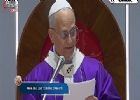
Papa XIV. Leo`nun Türkiye Ziyareti | Volkswagen Arena Efkaristiya Ayini
-
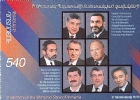
Parliament Shooting in Armenia, October 27, 1999
-

Albert - Brave Heart | ???????? Armenia | Official Music Video | Junior Eurovision 2025
-
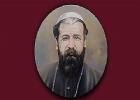
Սրբադասման Սուրբ Պատարագ եւ Հրեշտակ Տեառն Մարեմեան աղօթք 19 հոկտեմբեր 2025 – Լեւոն ԺԴ. Քահանայապետ
Anket Tüm Anketler
Günün Sözü
Մարդիկ կը մեոնին, բայց ճշմարտութիւնը կը մնայ յաւիտեան։











